Abstract
Theoretical and experimental evidence suggests that the dissipation of high frequency pressure waves in blood vessels is caused primarily by the viscoelastic behavior of the vessel wall. In this theoretical analysis the vessels are considered as fluid-filled circular cylindrical shells whose walls have isotropic and homogeneous viscoelastic properties and are subjected to an initial axial stretch and a transmural pressure. If the wall material is incompressible and behaves as a Voigt solid in shear, the results predict a decrease in wave amplitude per wavelength which is essentially independent of frequency over a wide range. This finding is in qualitative agreement with recent experiments on anesthetized dogs. A parametric study also shows a great sensitivity of the dissipation to changes in transmural pressure and axial stretch. Axisymmetric waves are only mildly dispersive, while all nonaxisymmetric waves are highly dispersive and exhibit much stronger damping per wavelength at low frequencies than do axisymmetric waves.
Full text
PDF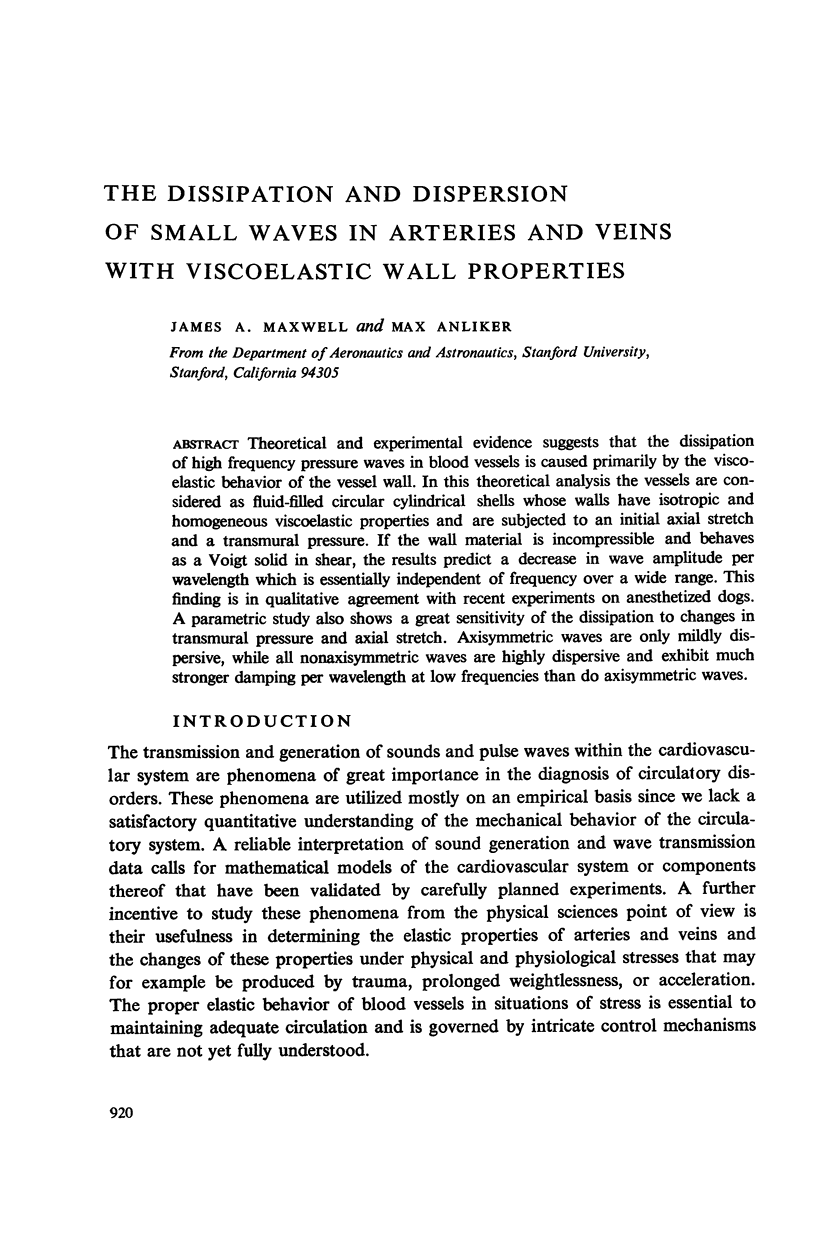
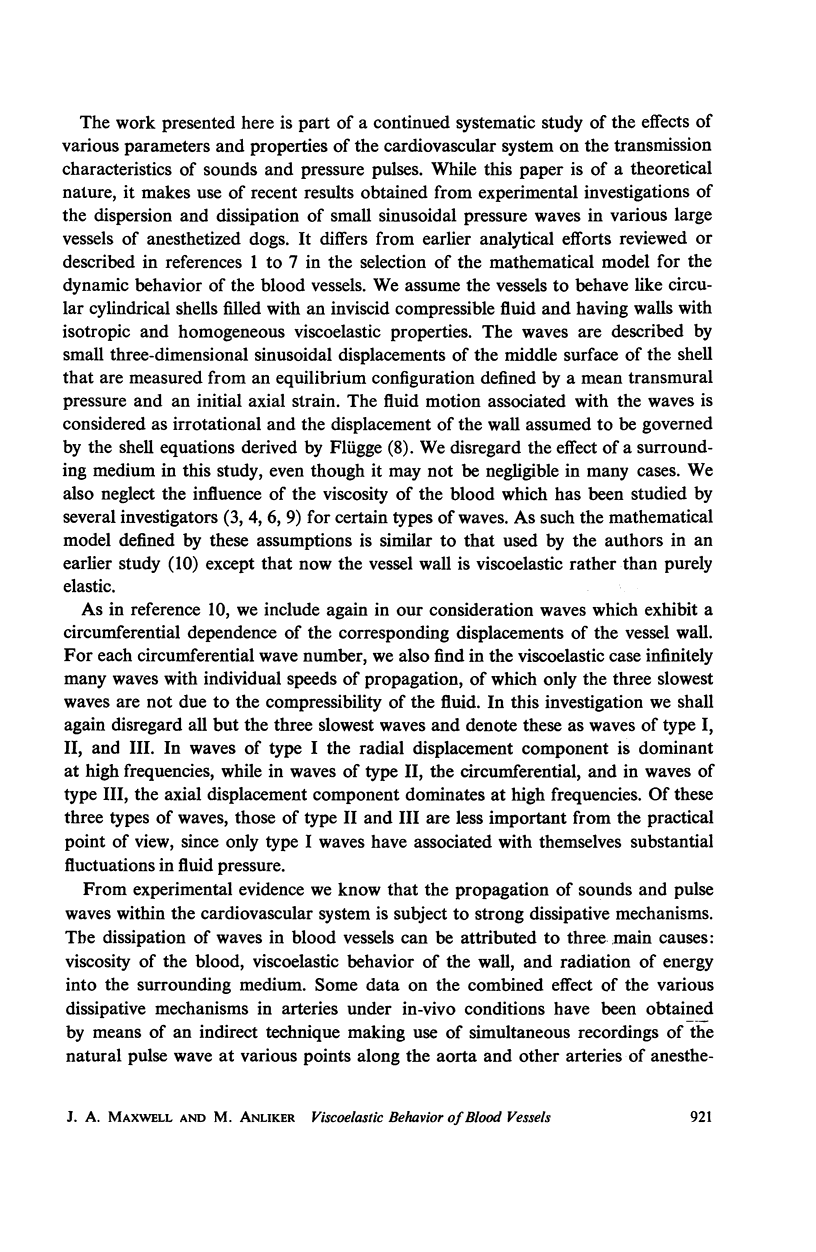
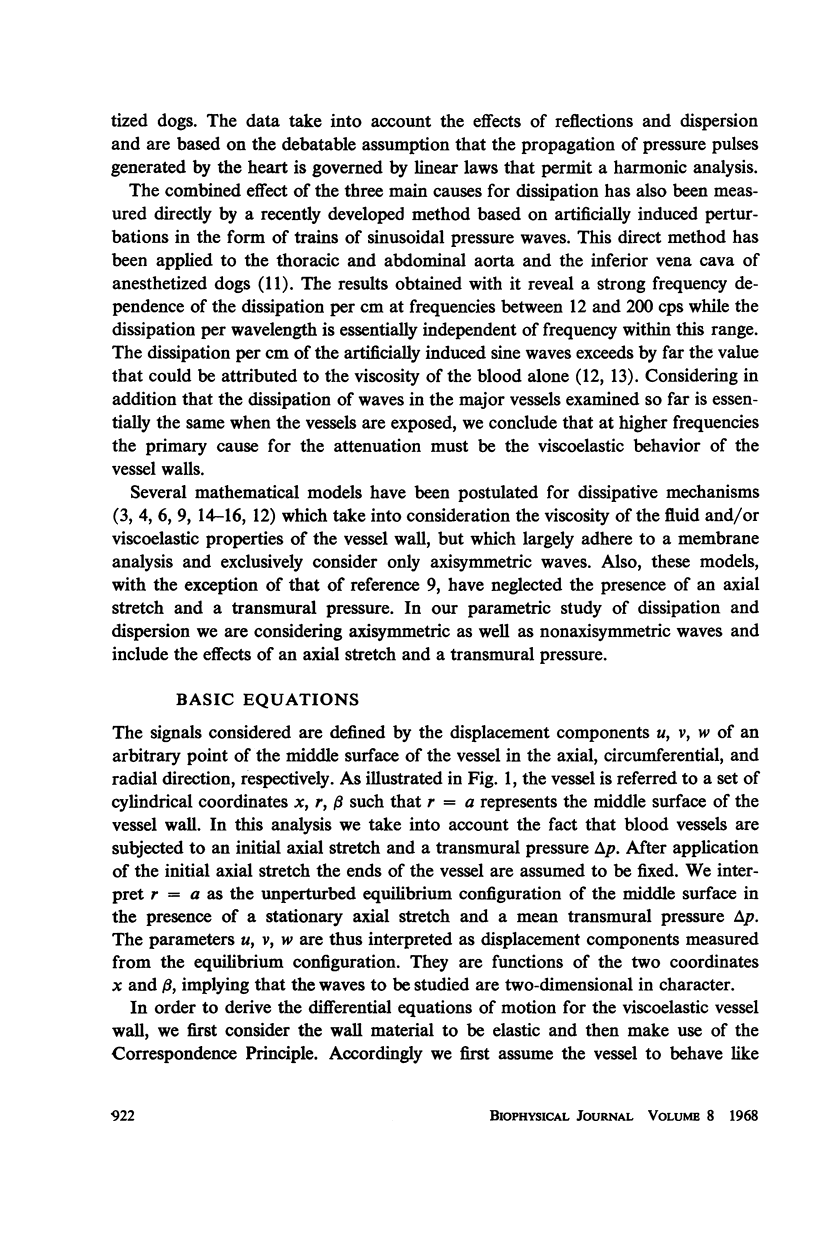
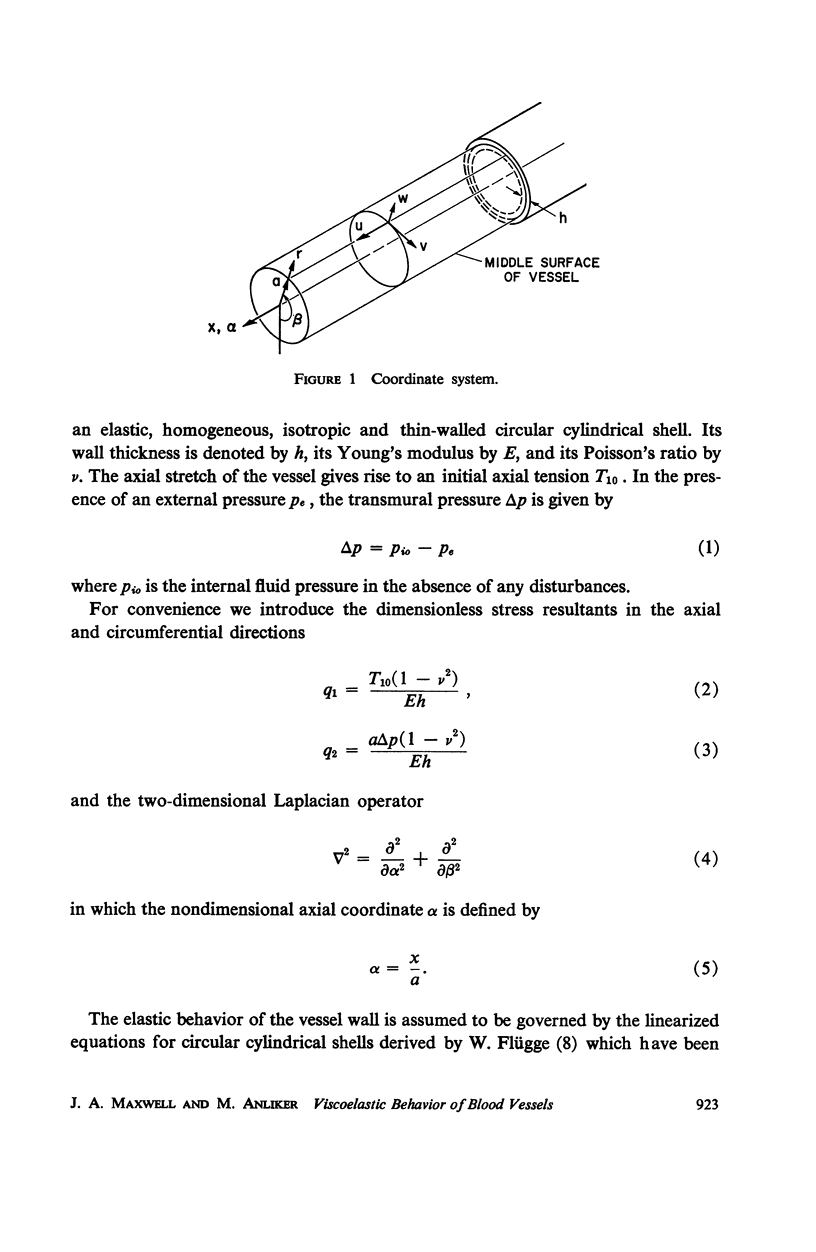
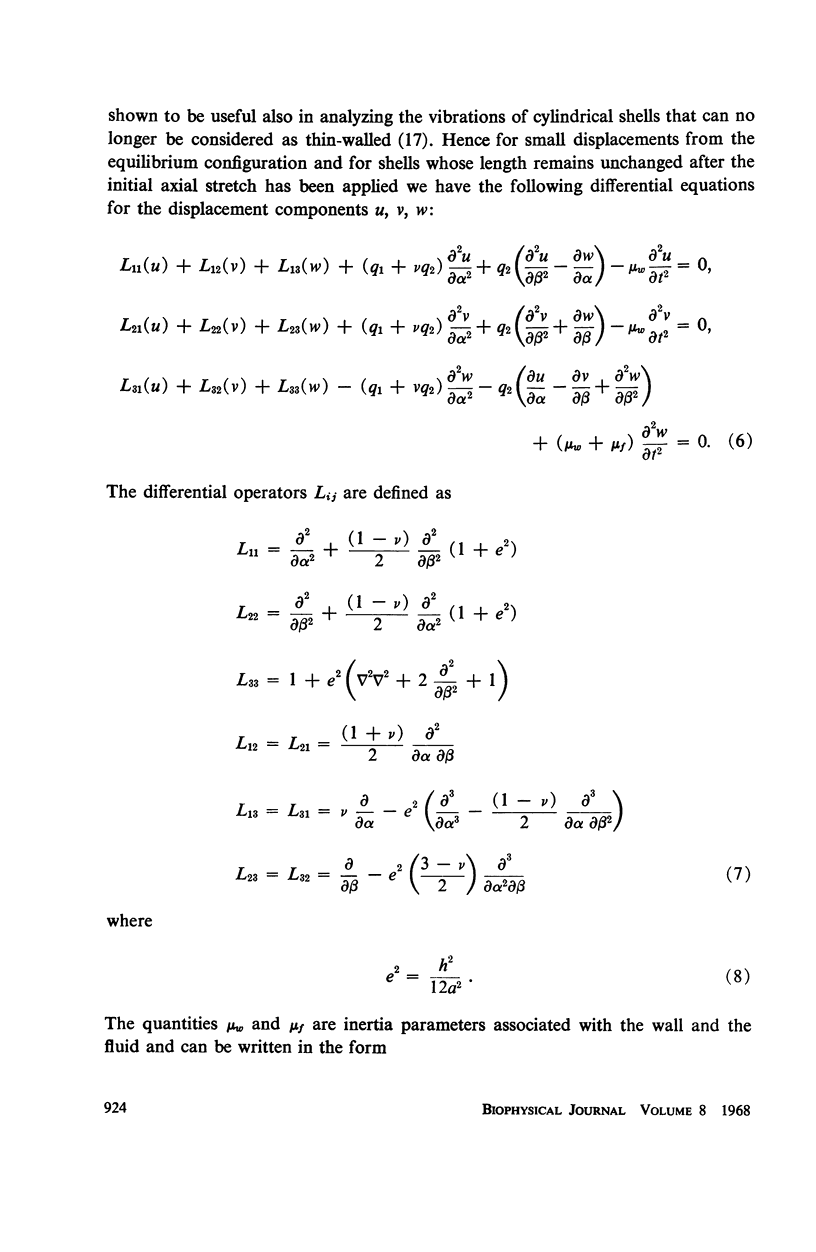
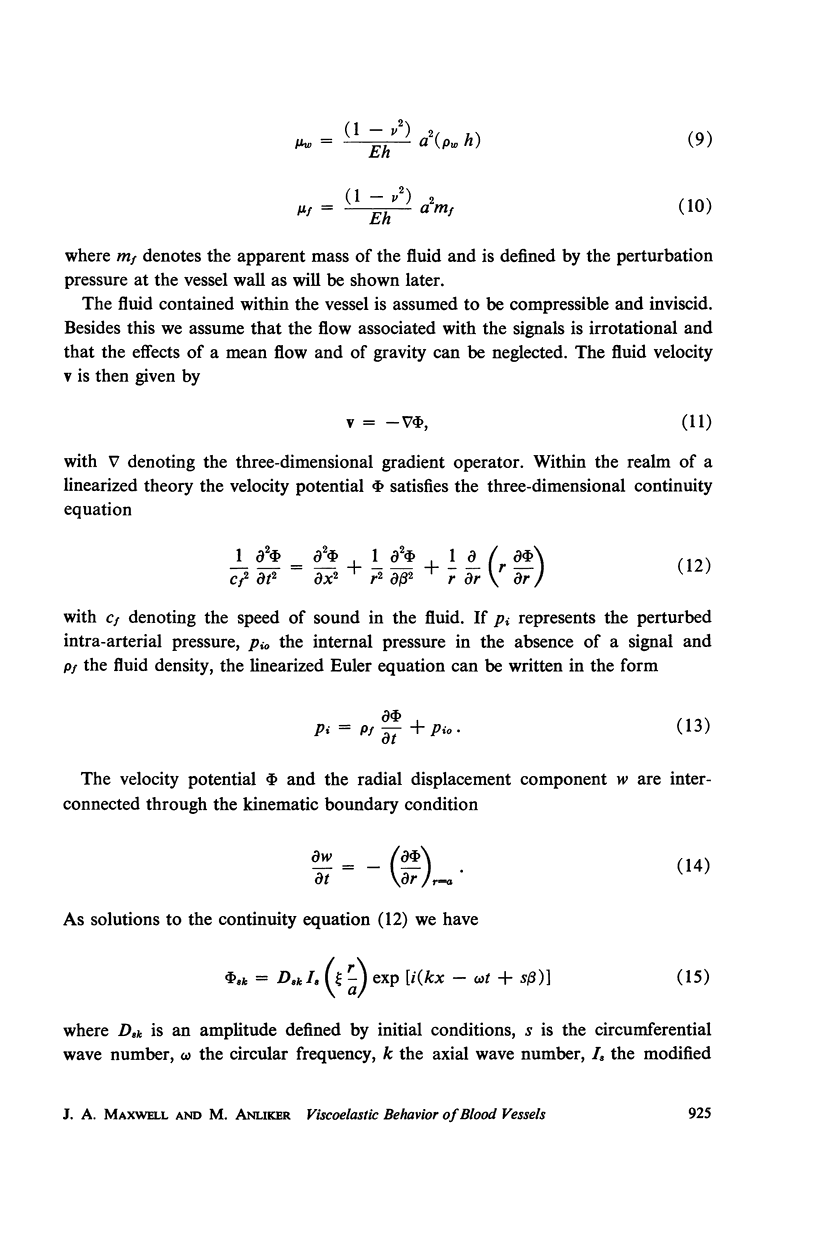
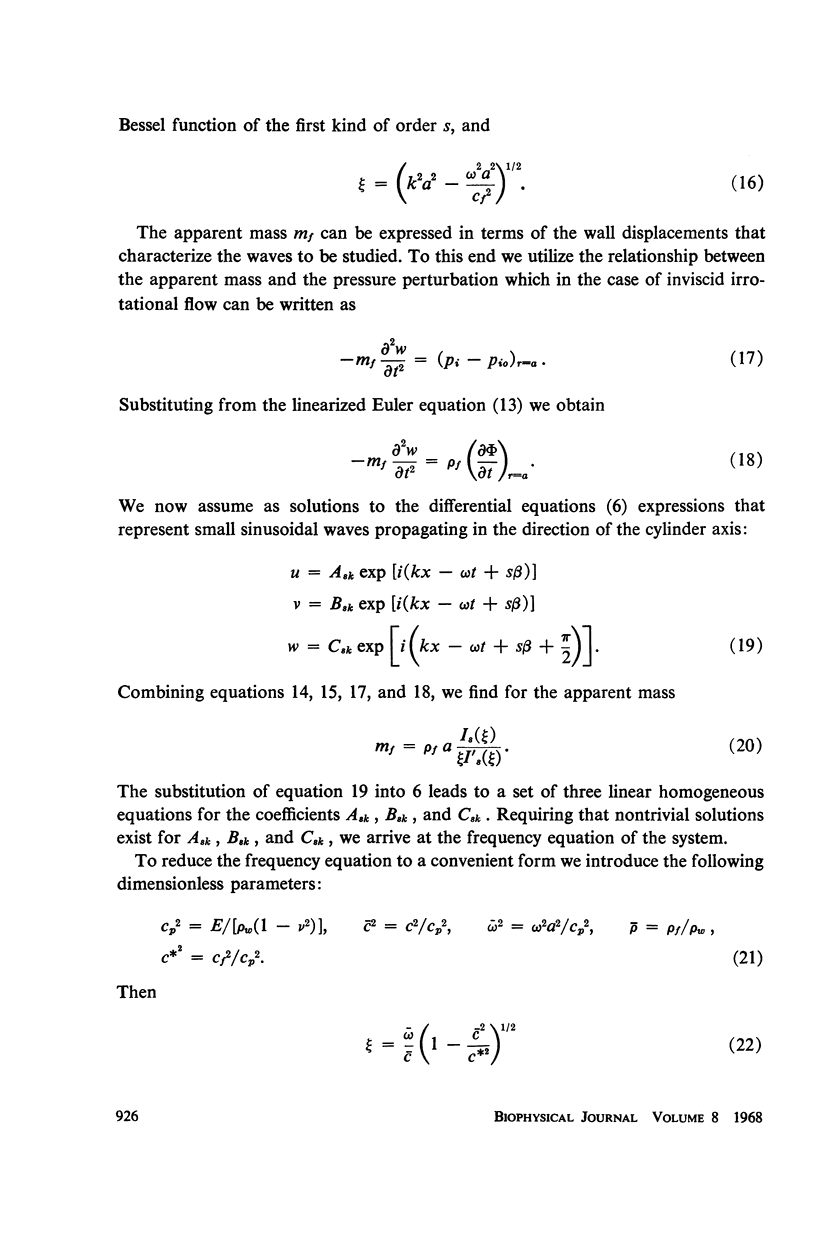
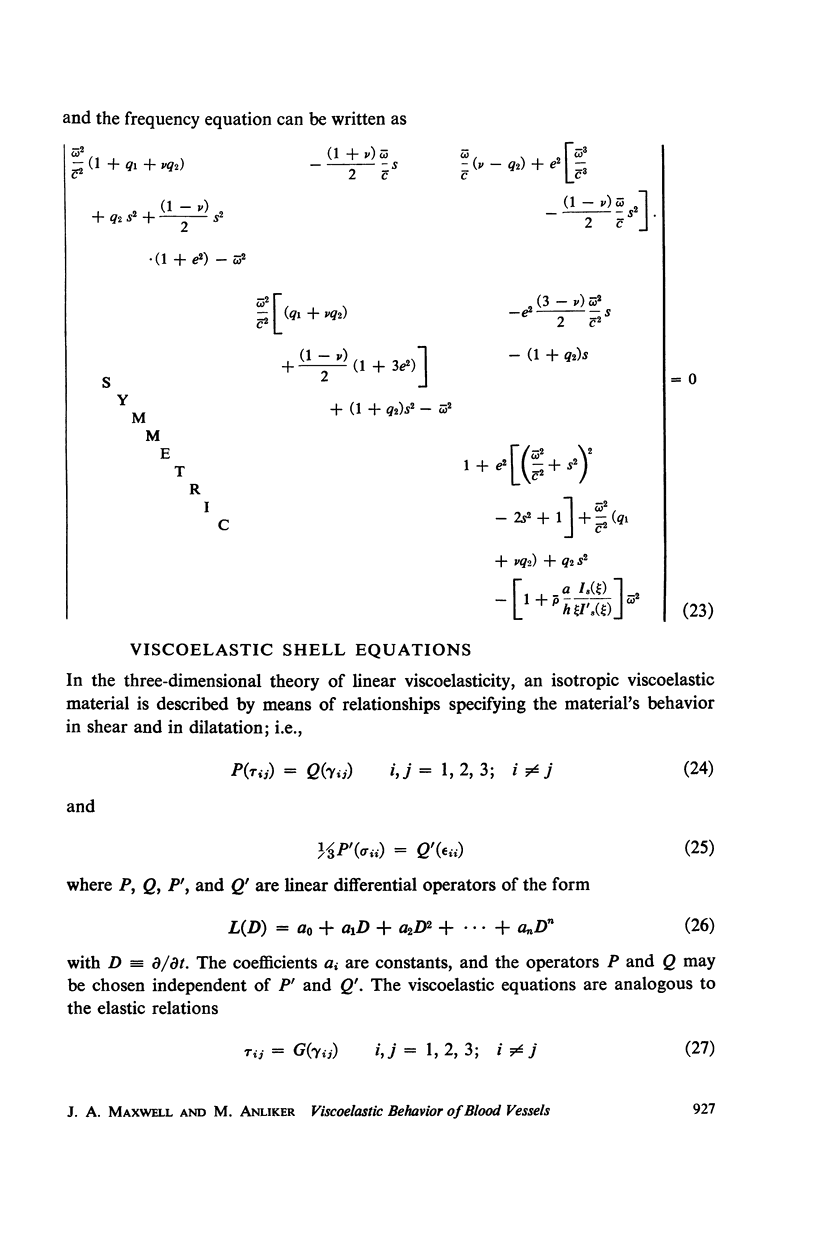
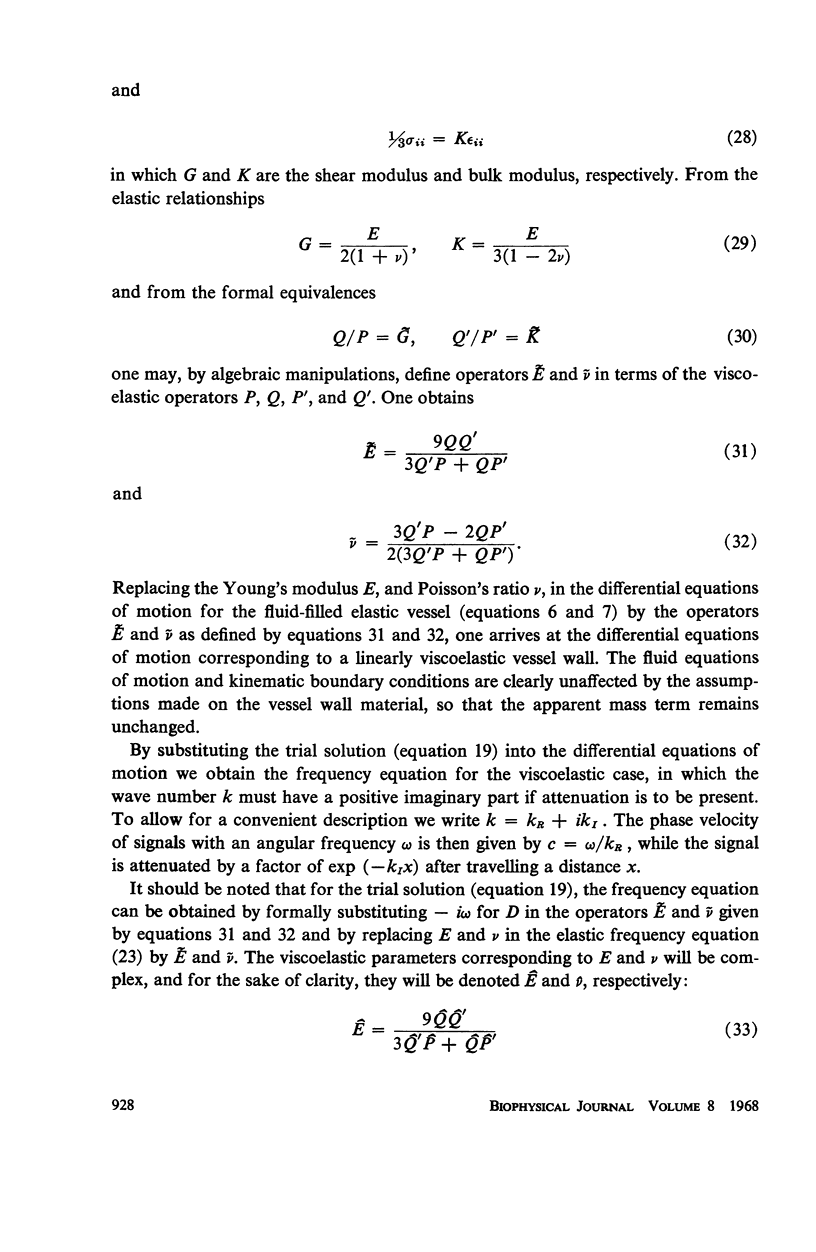
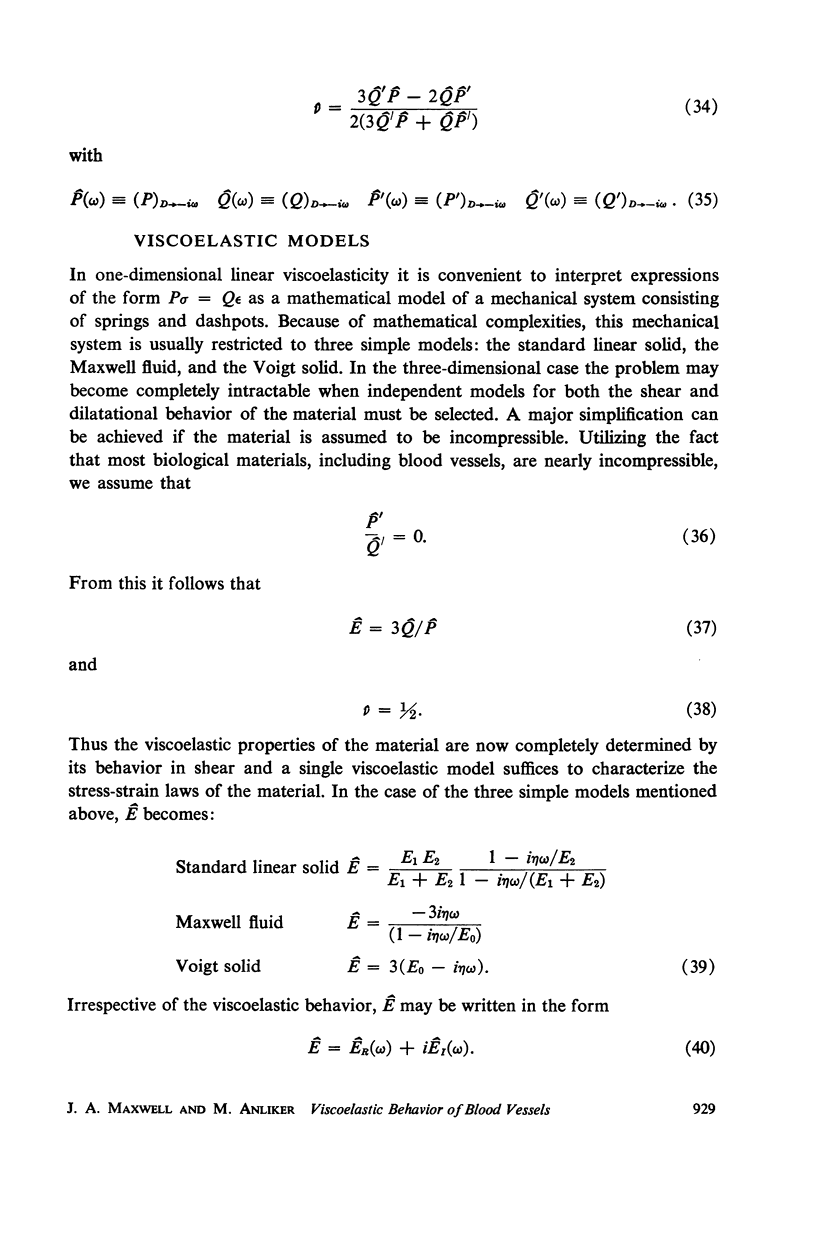
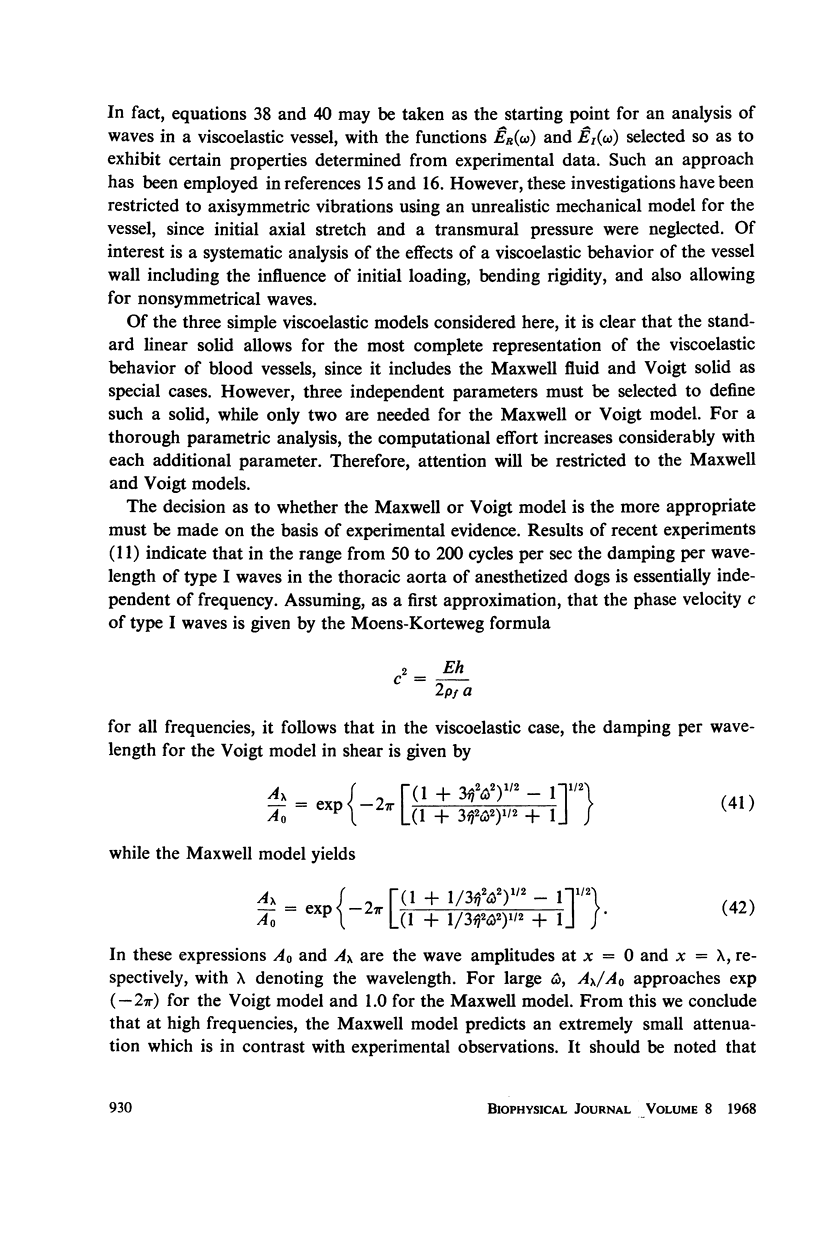
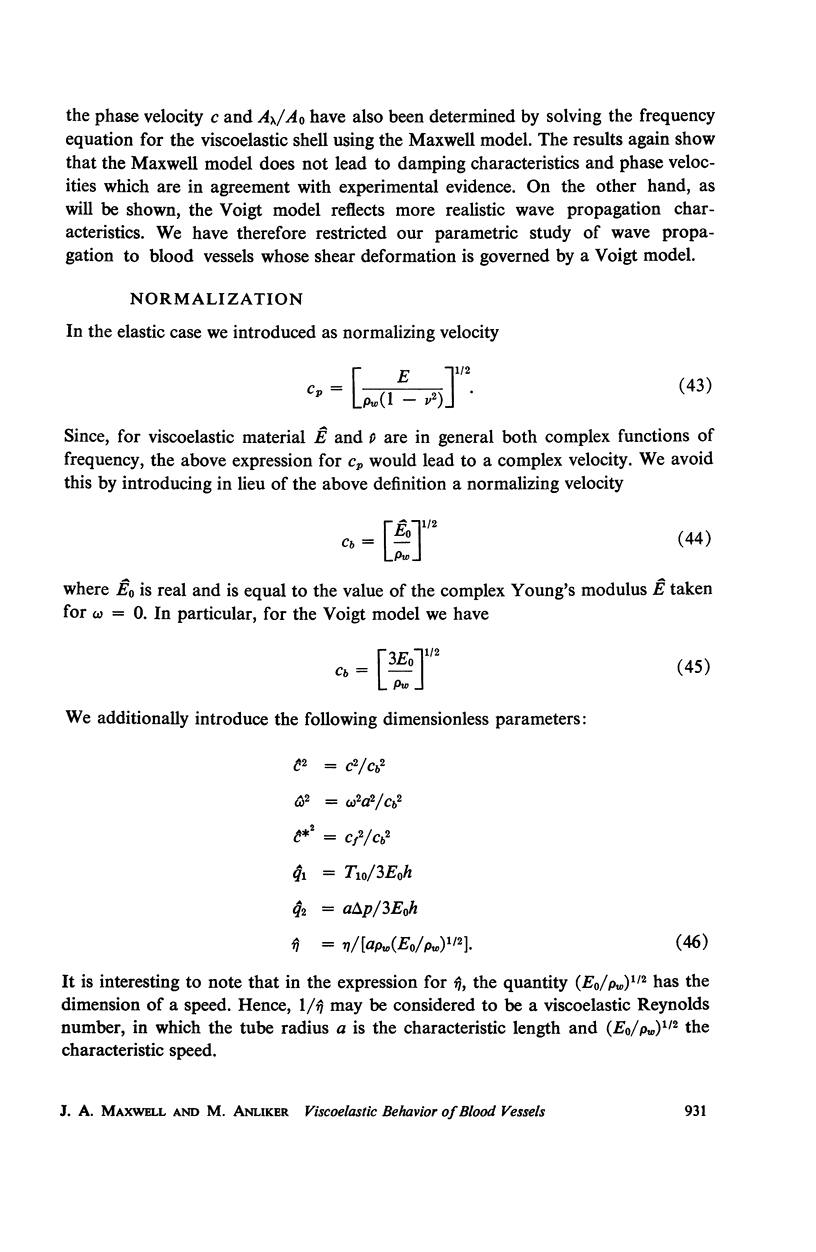
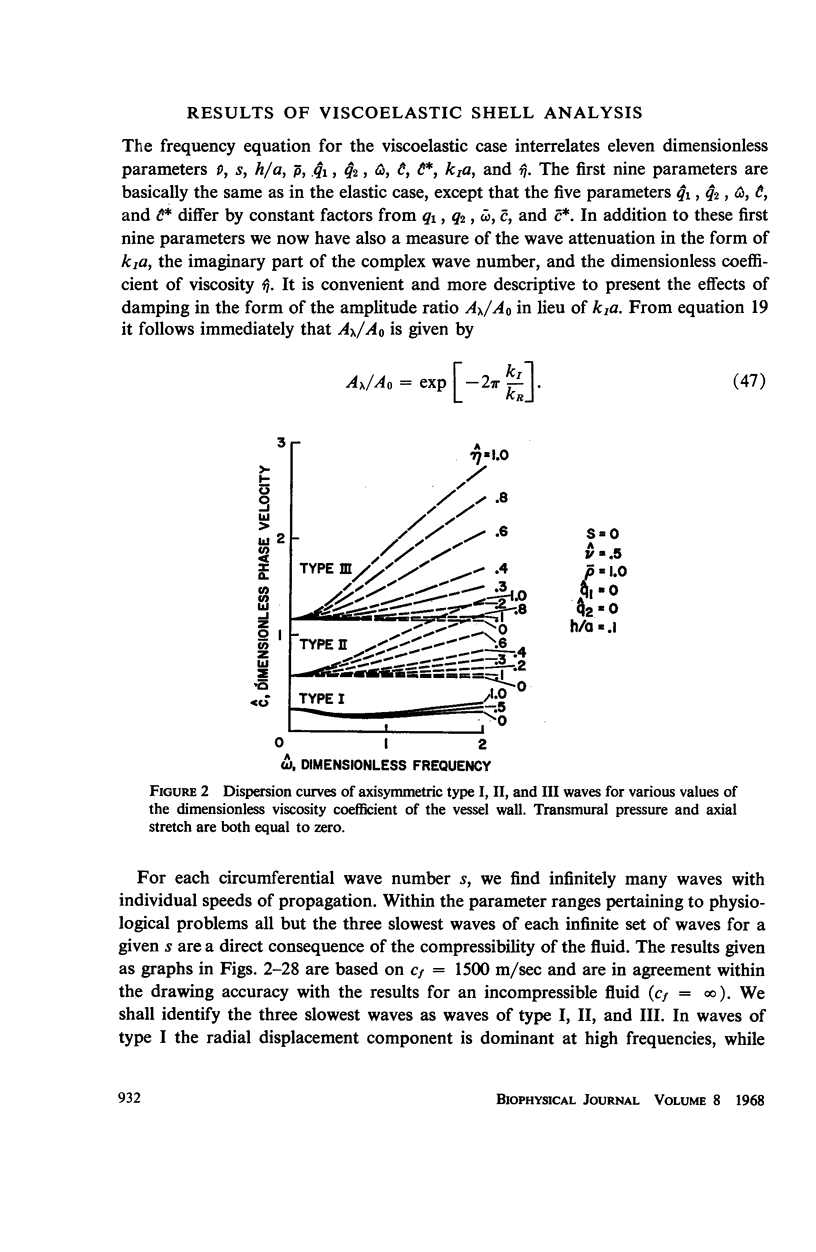
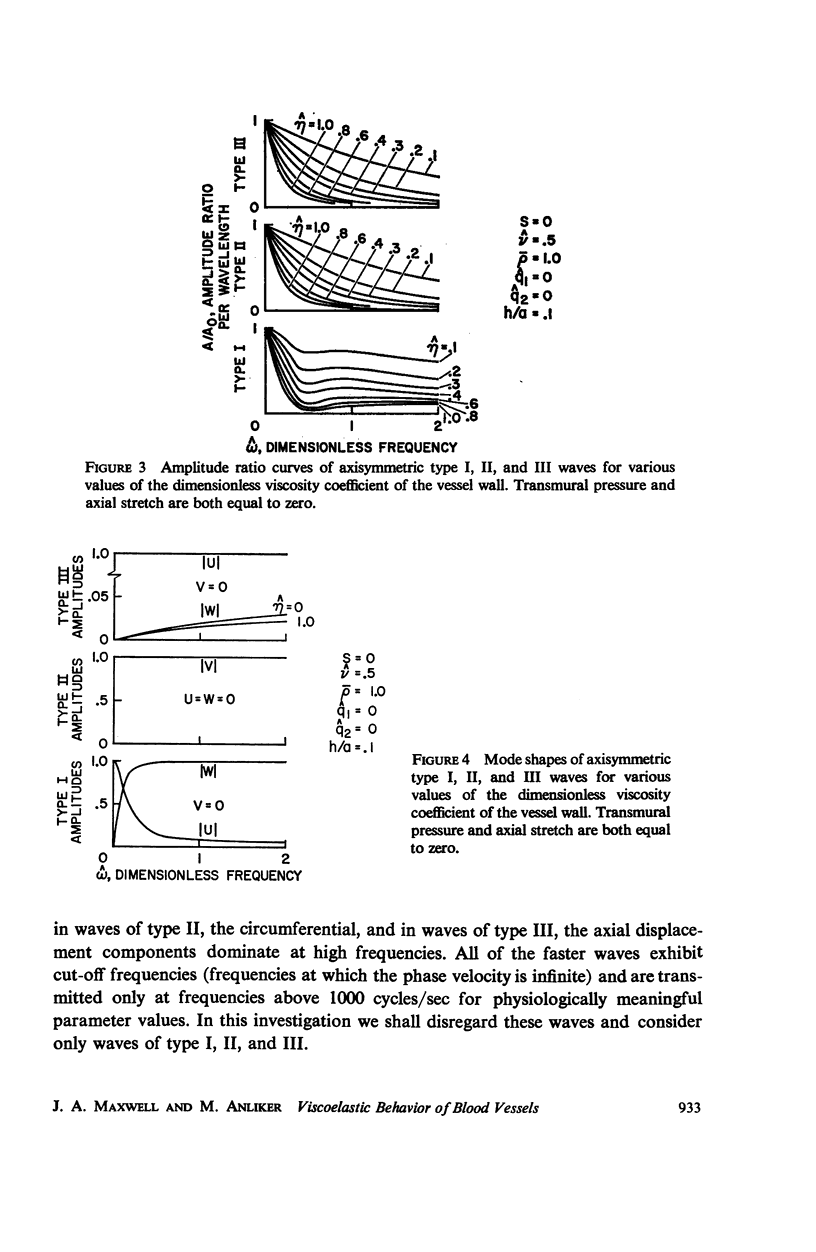
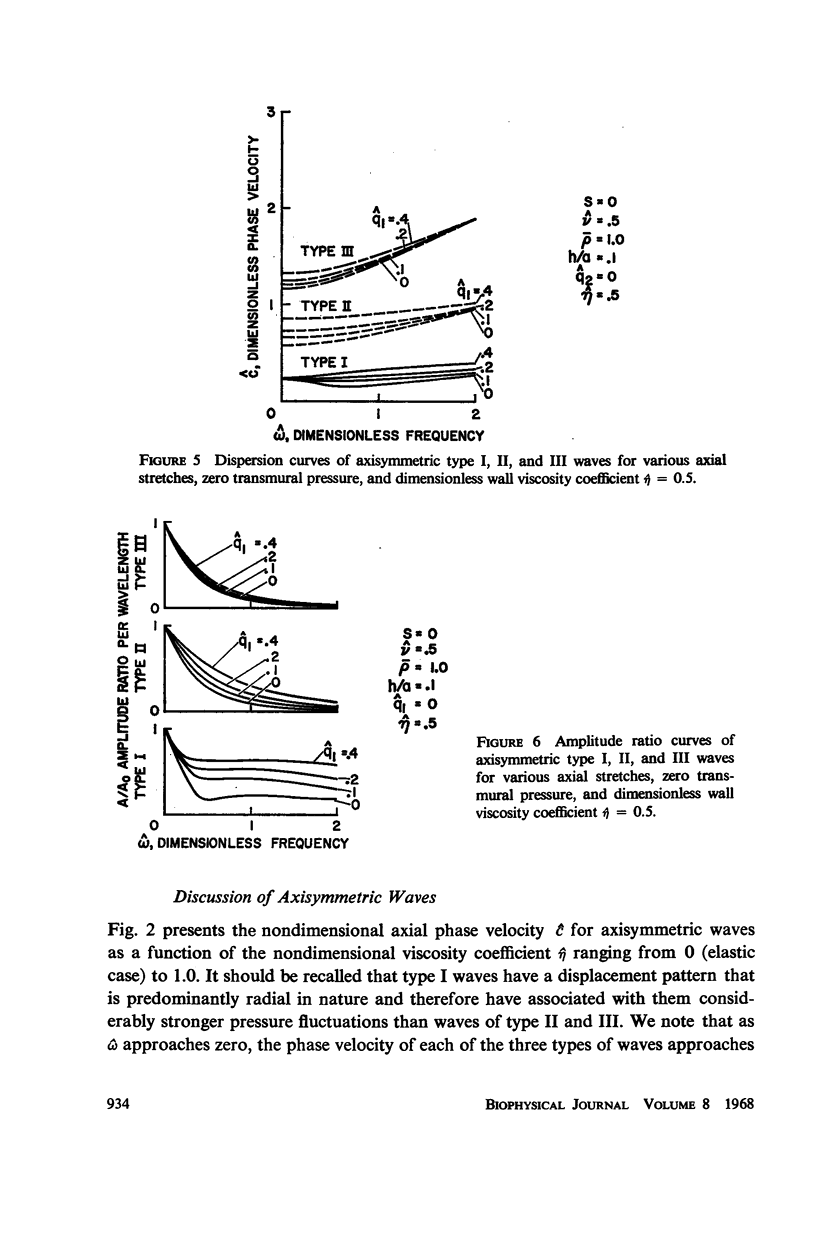
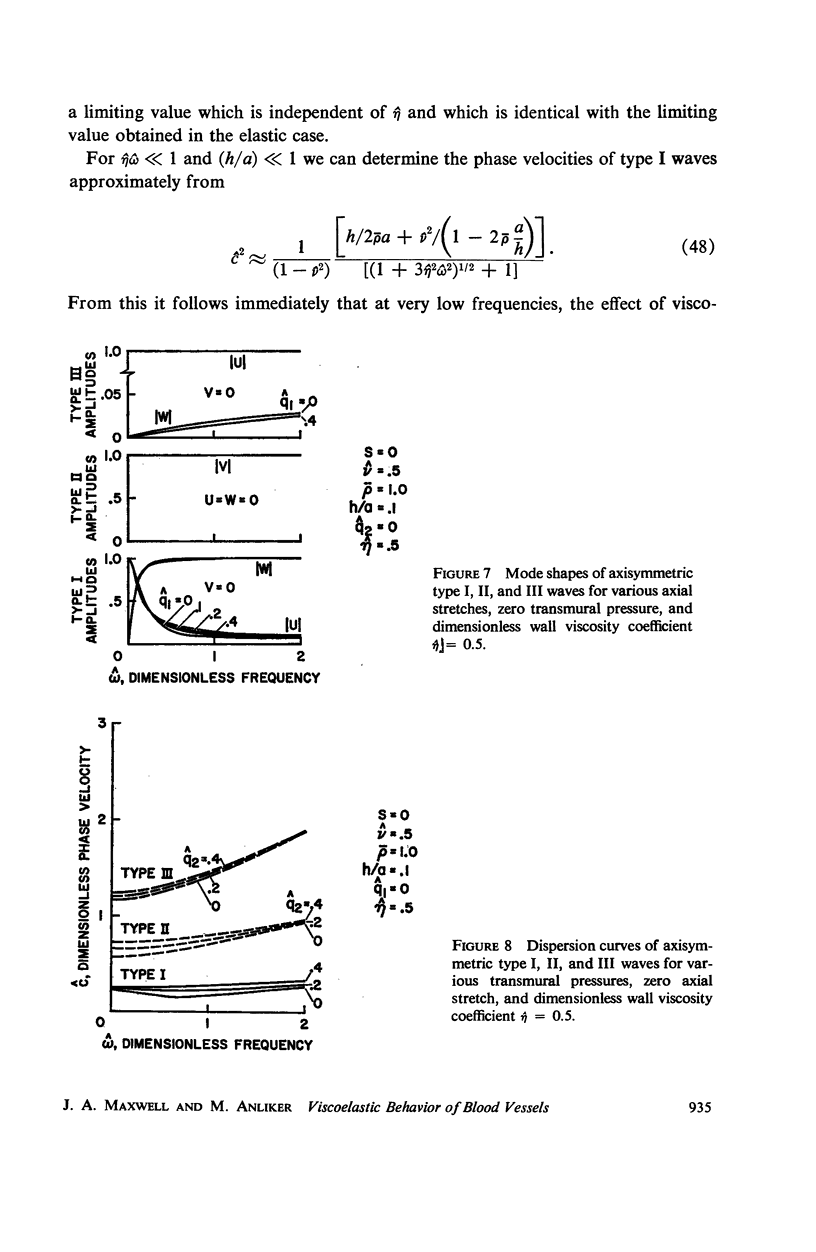
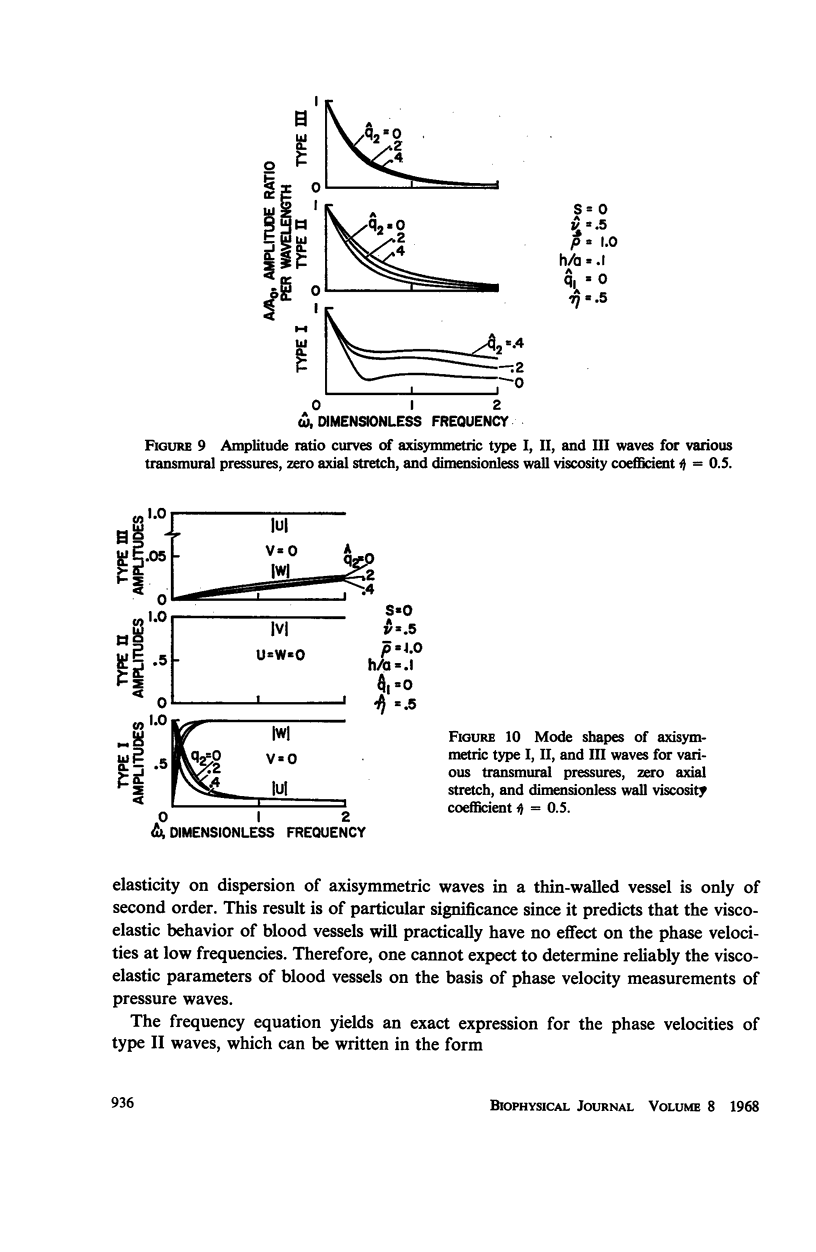
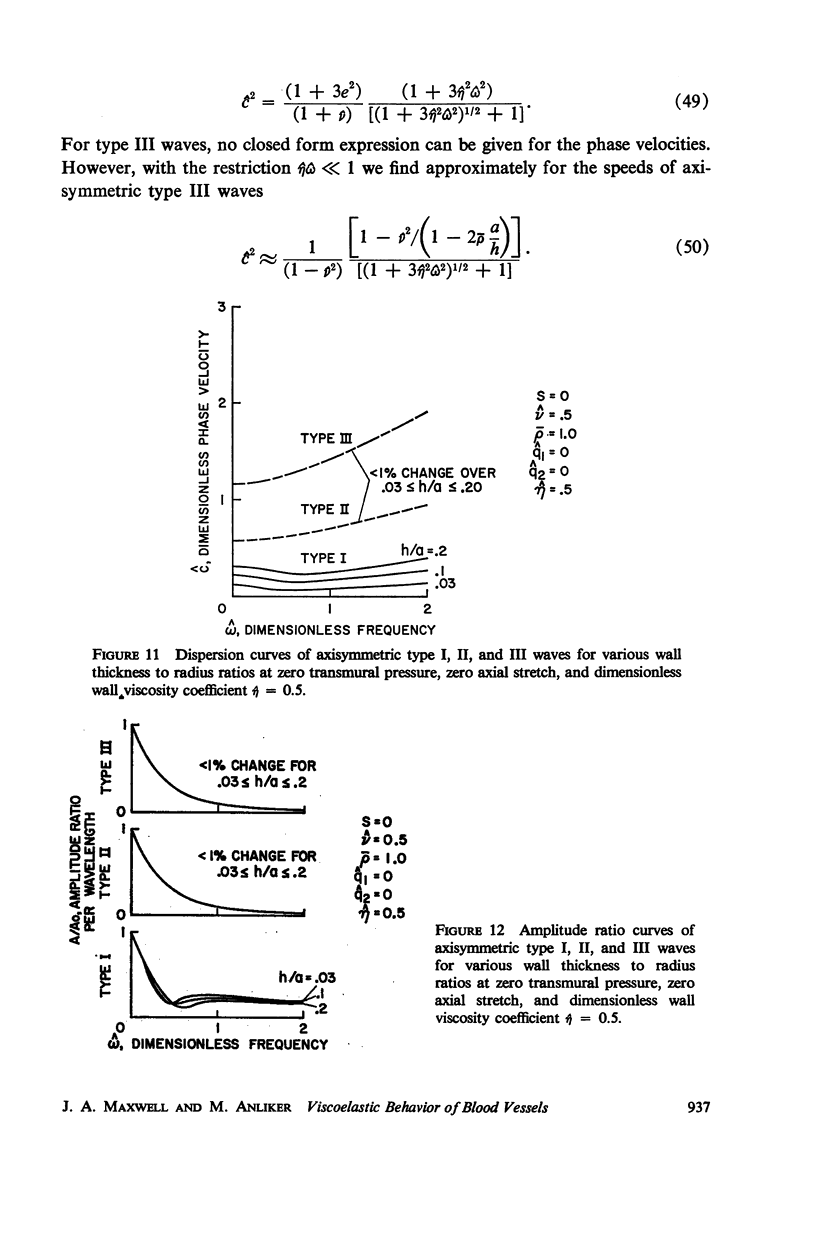
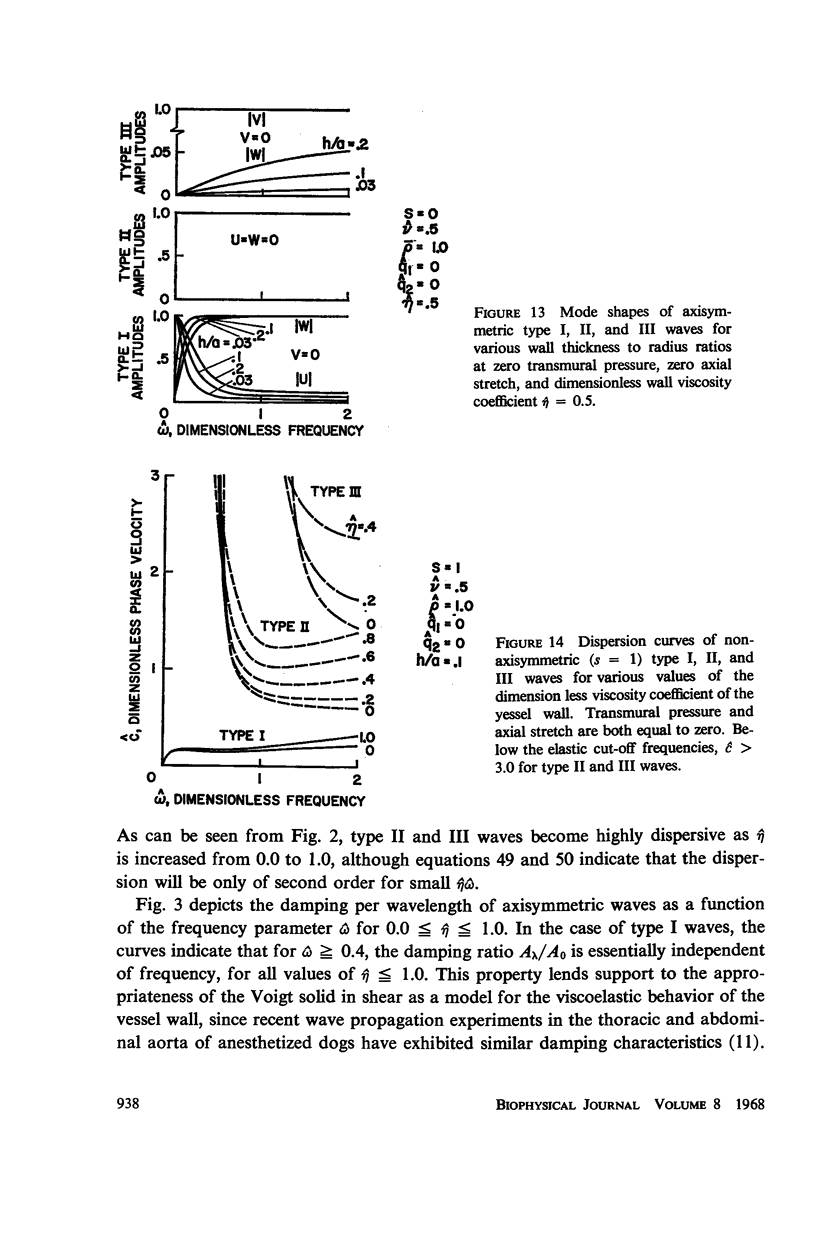

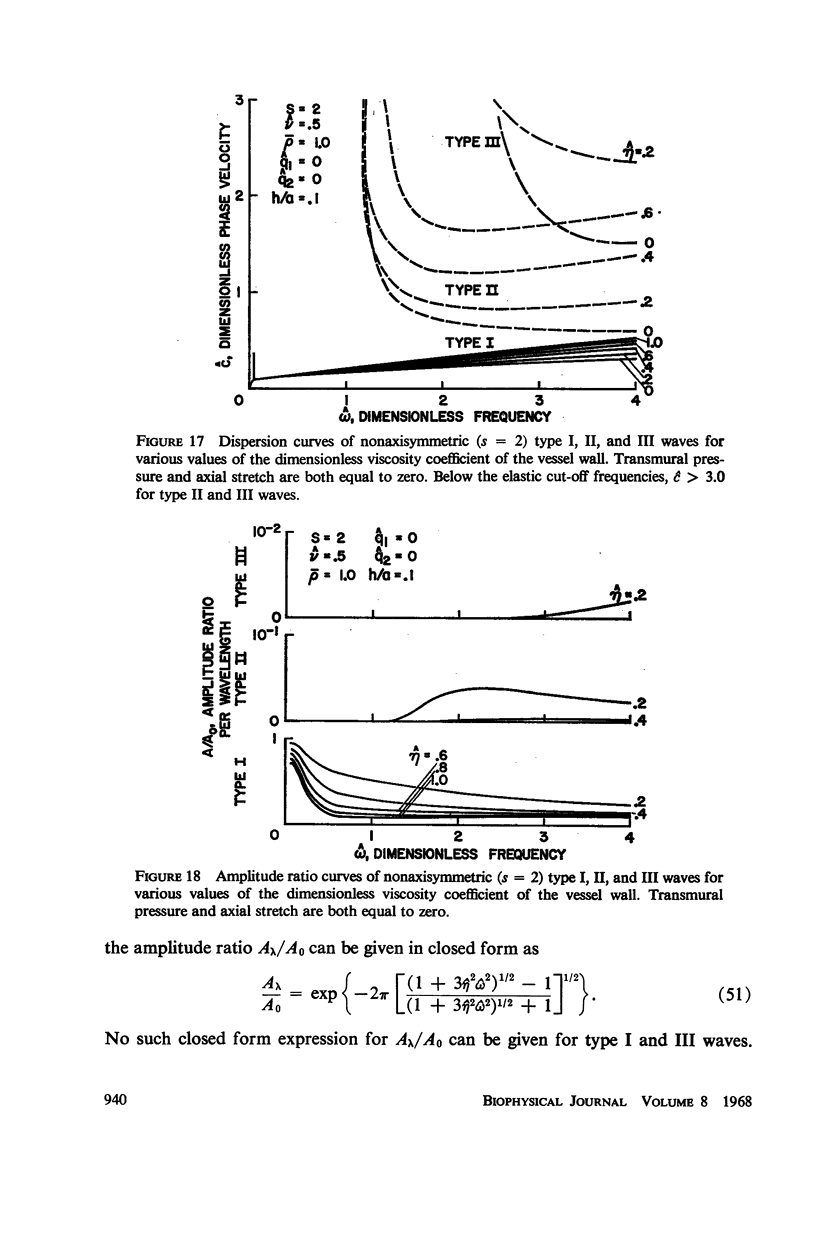
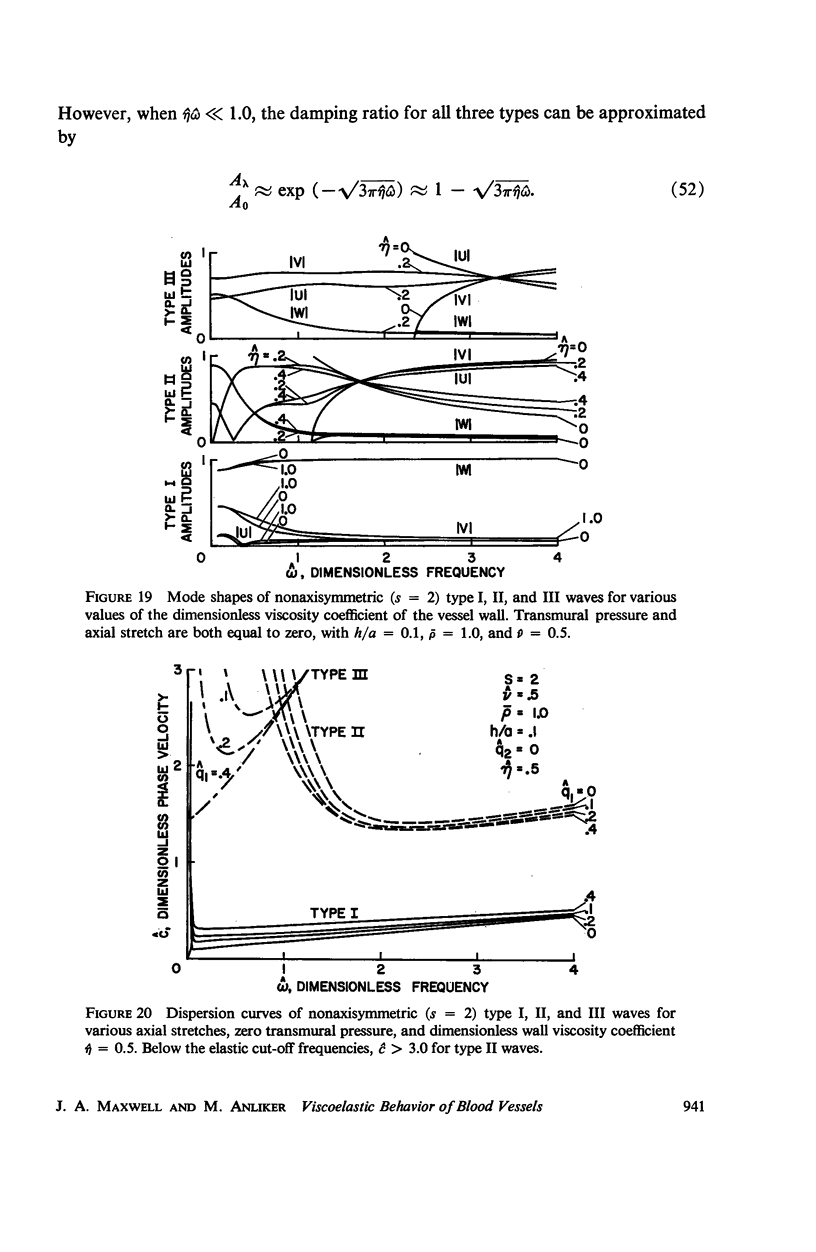
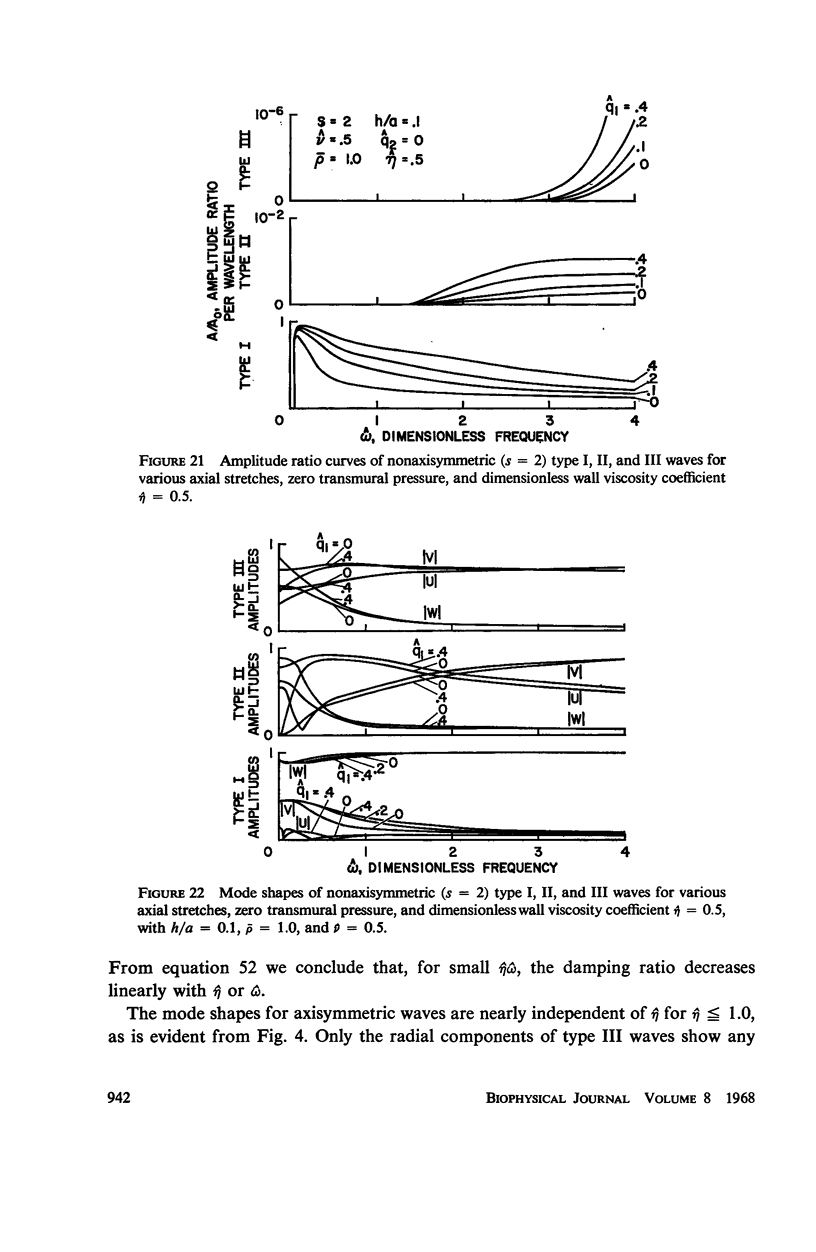
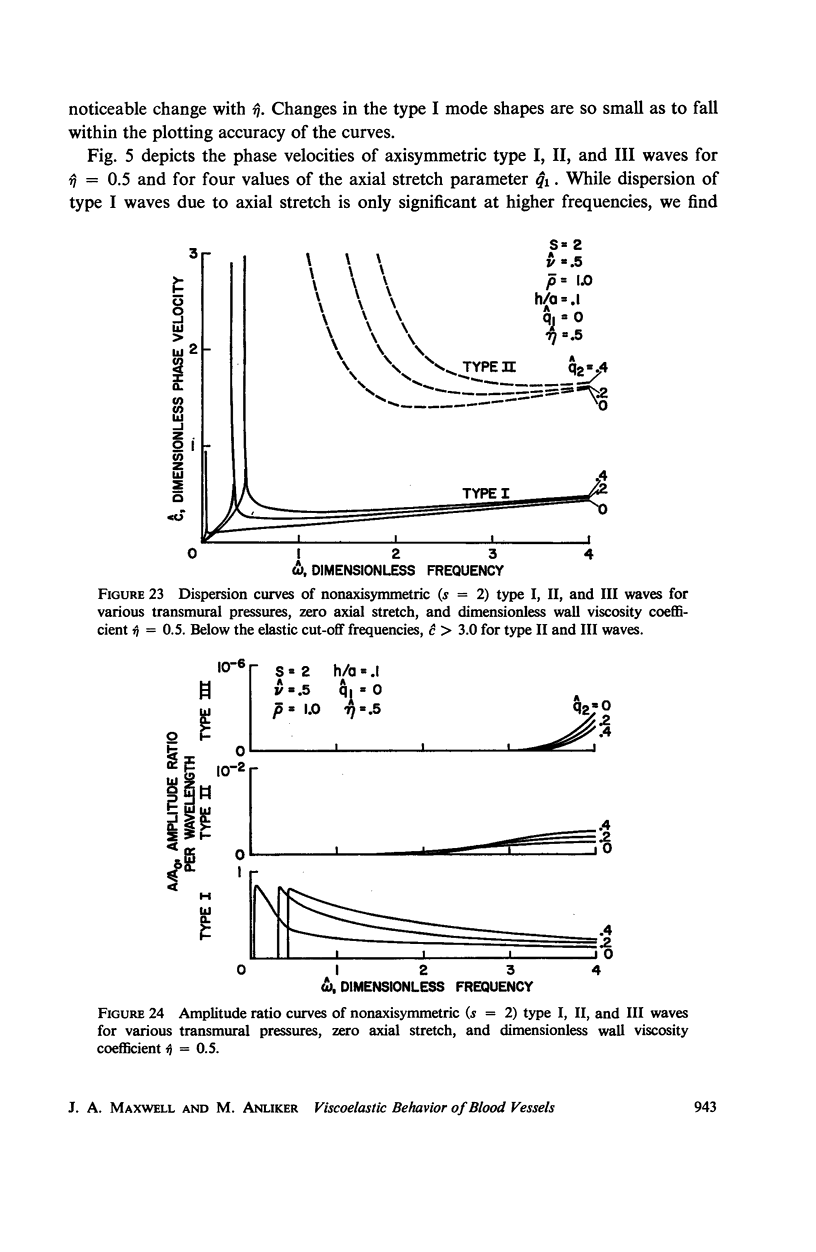
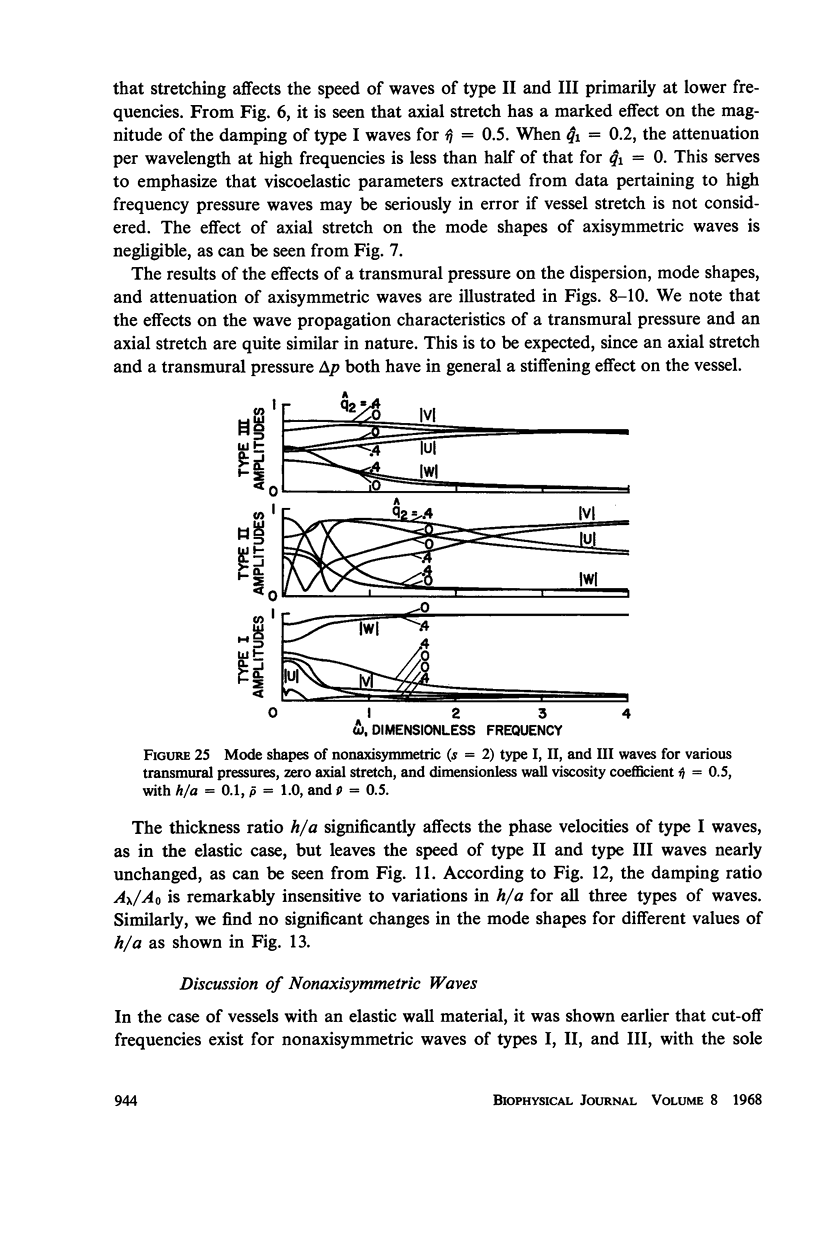
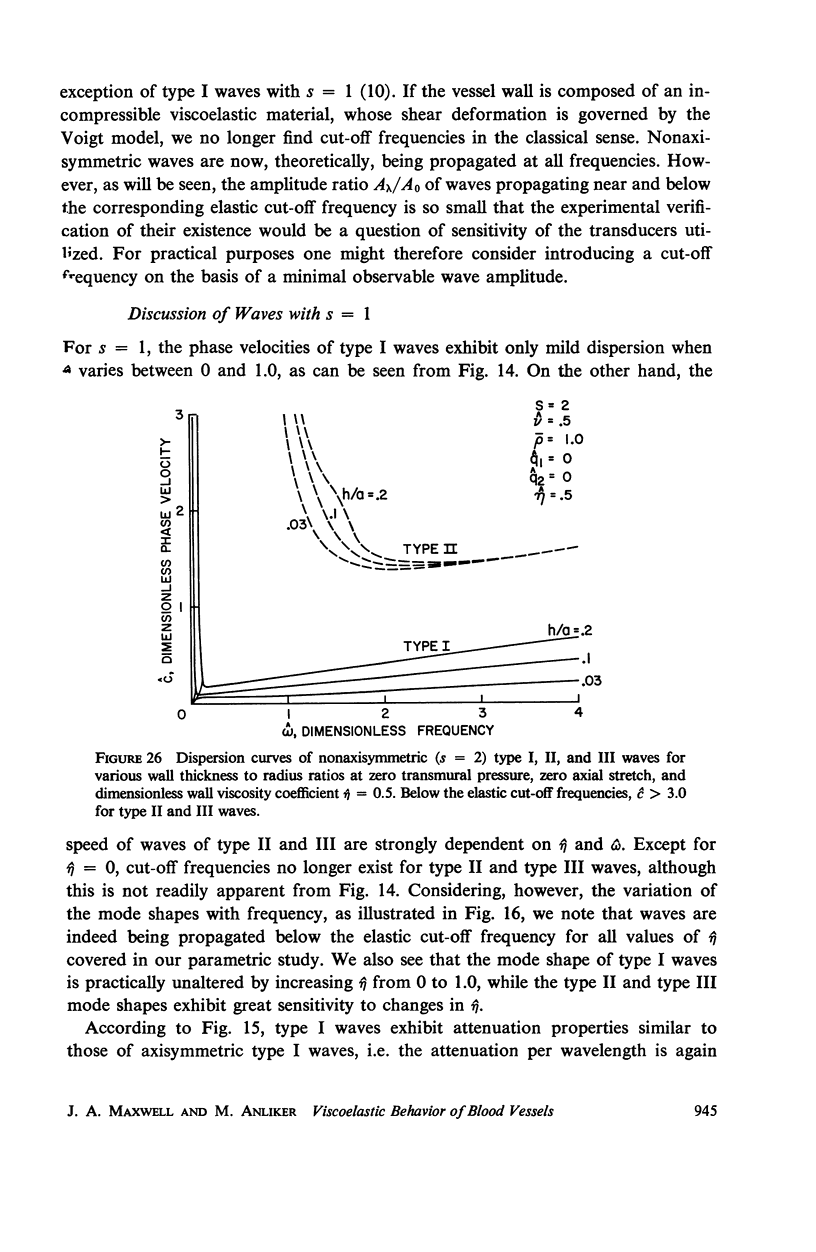
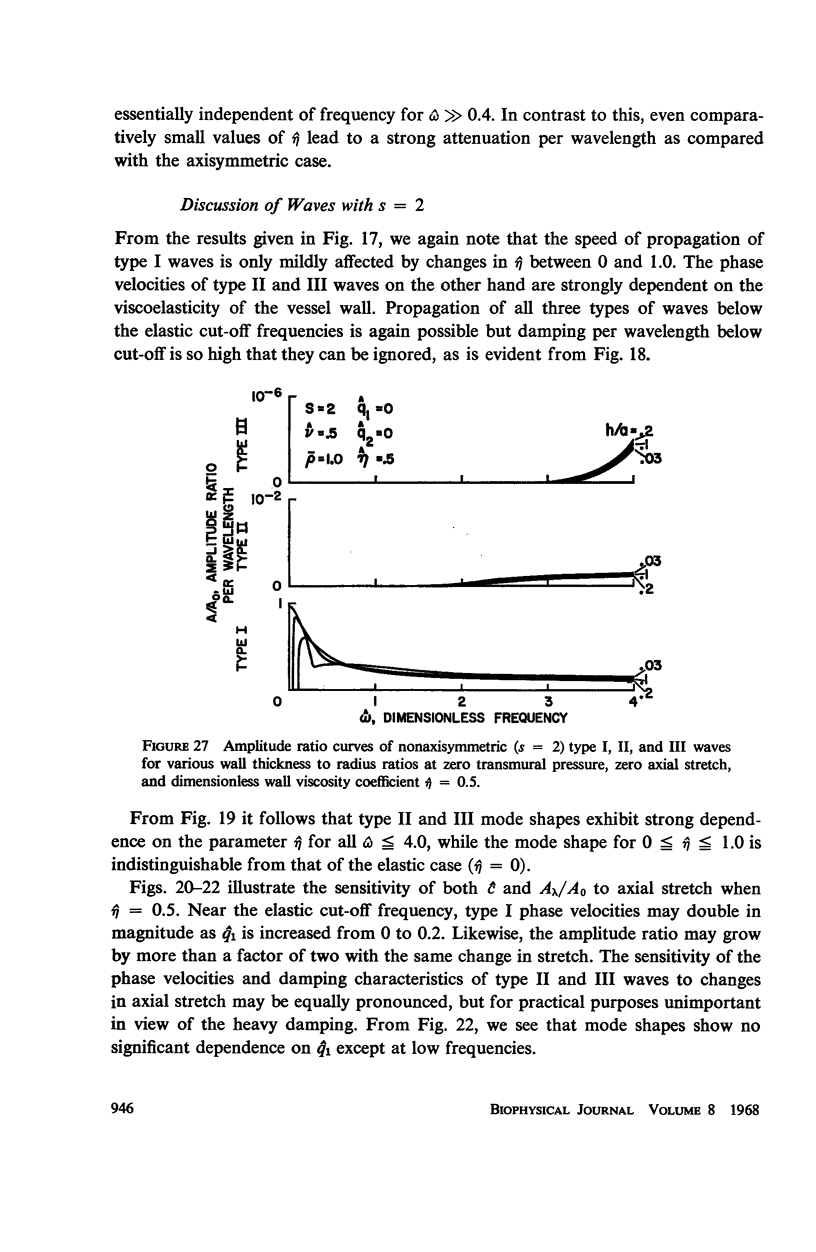
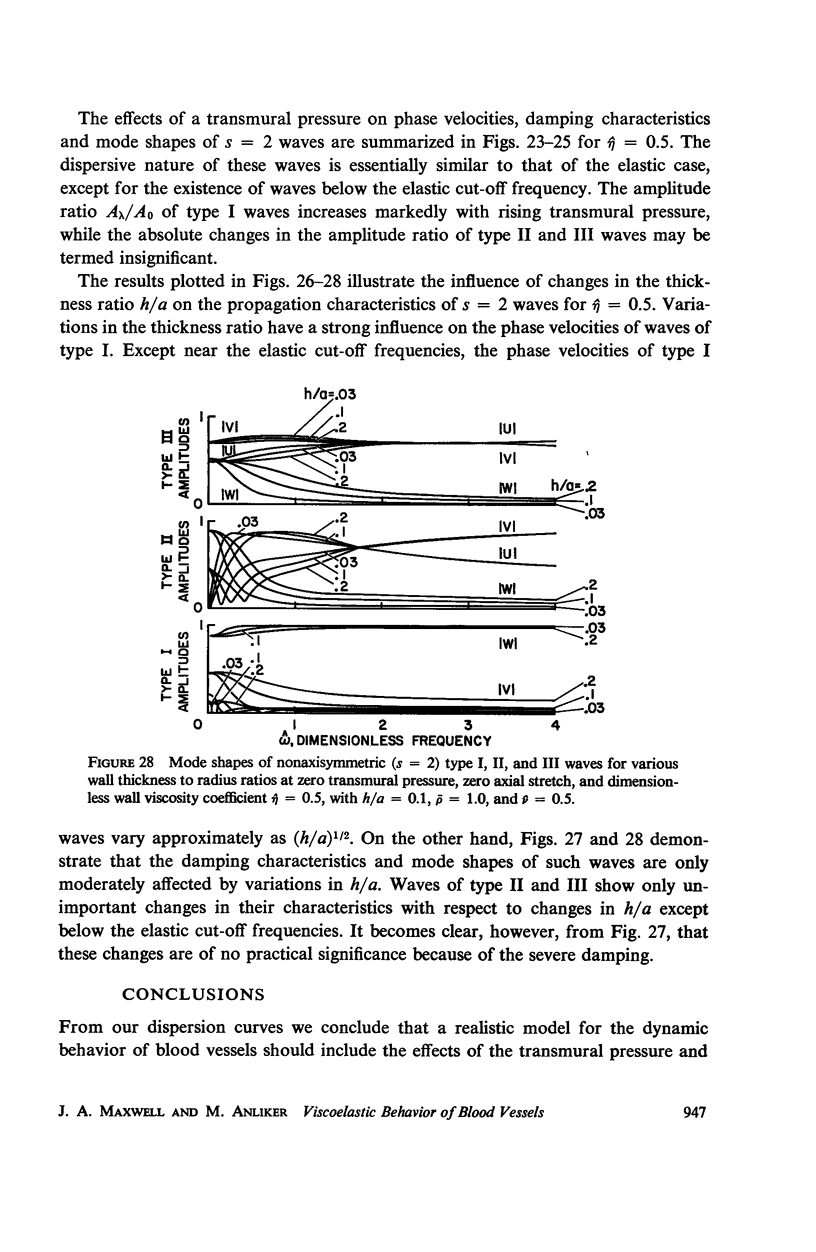
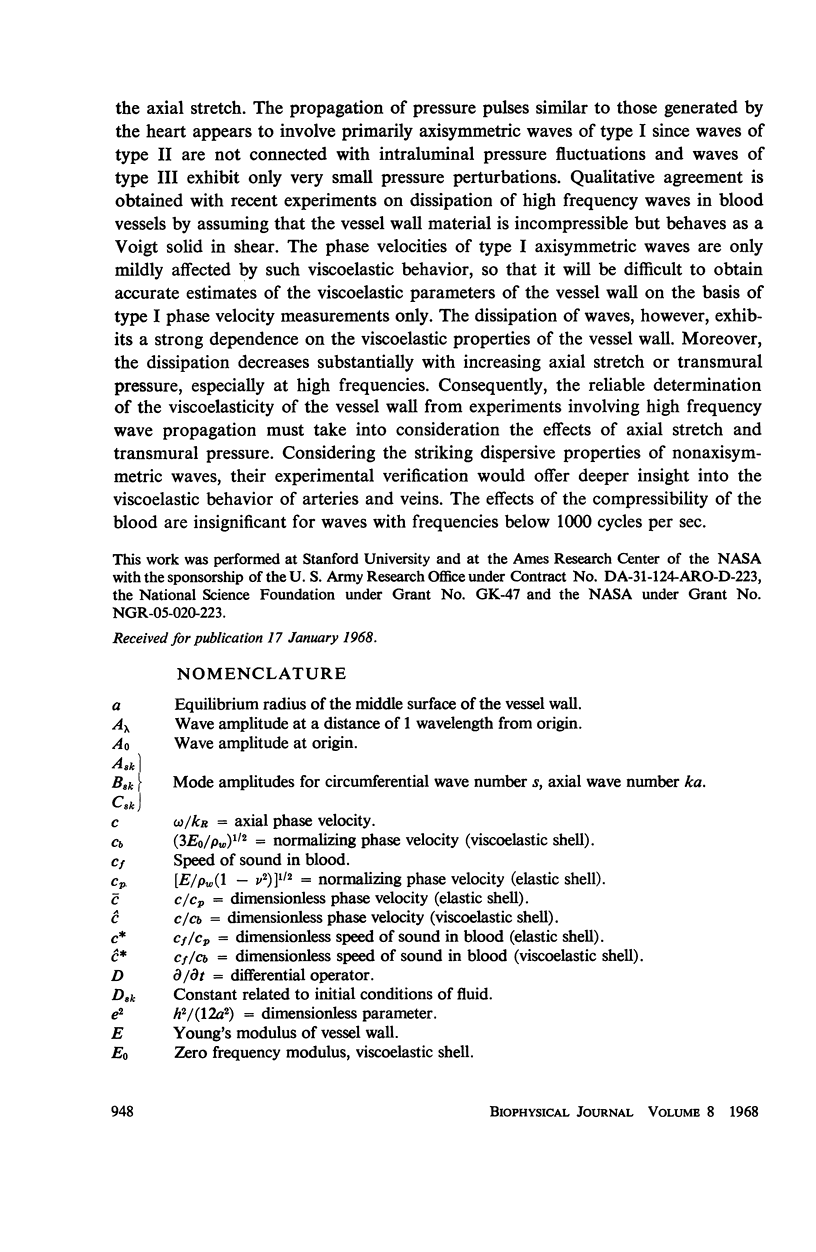
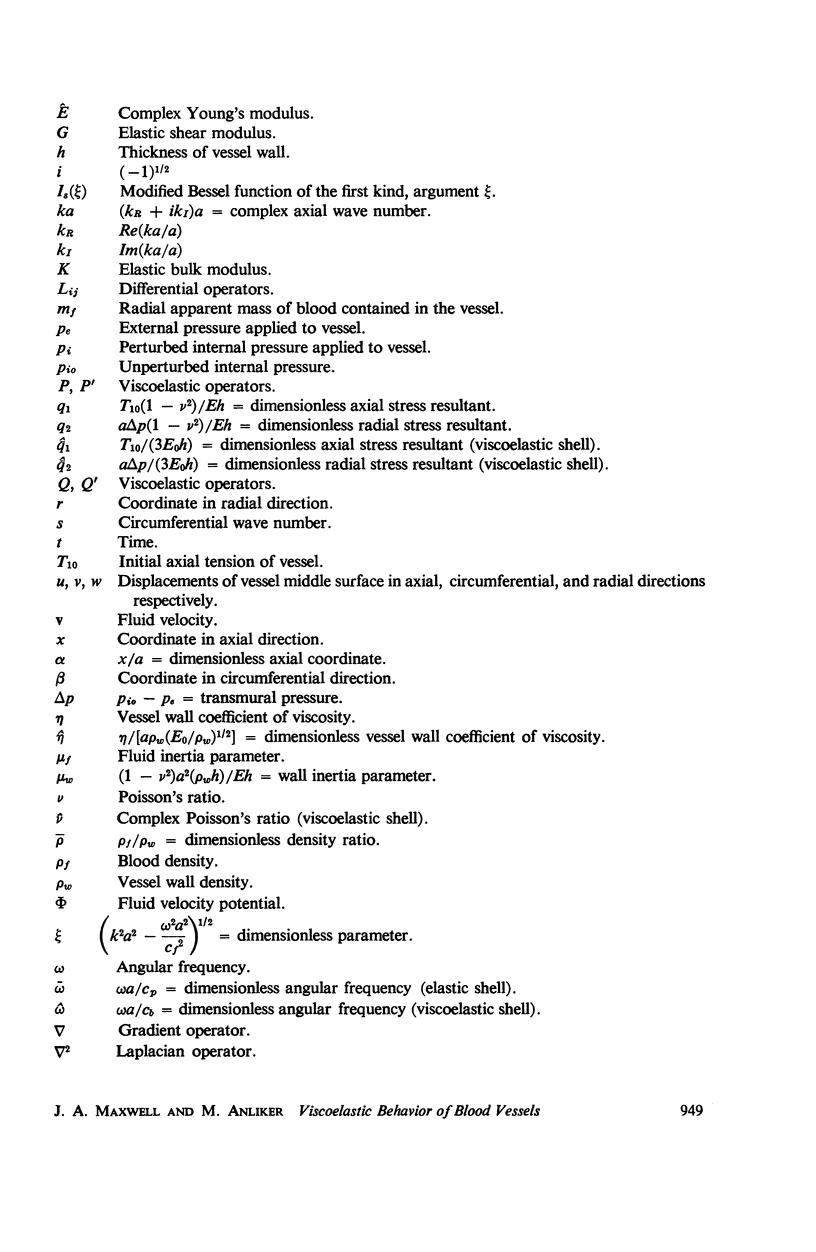
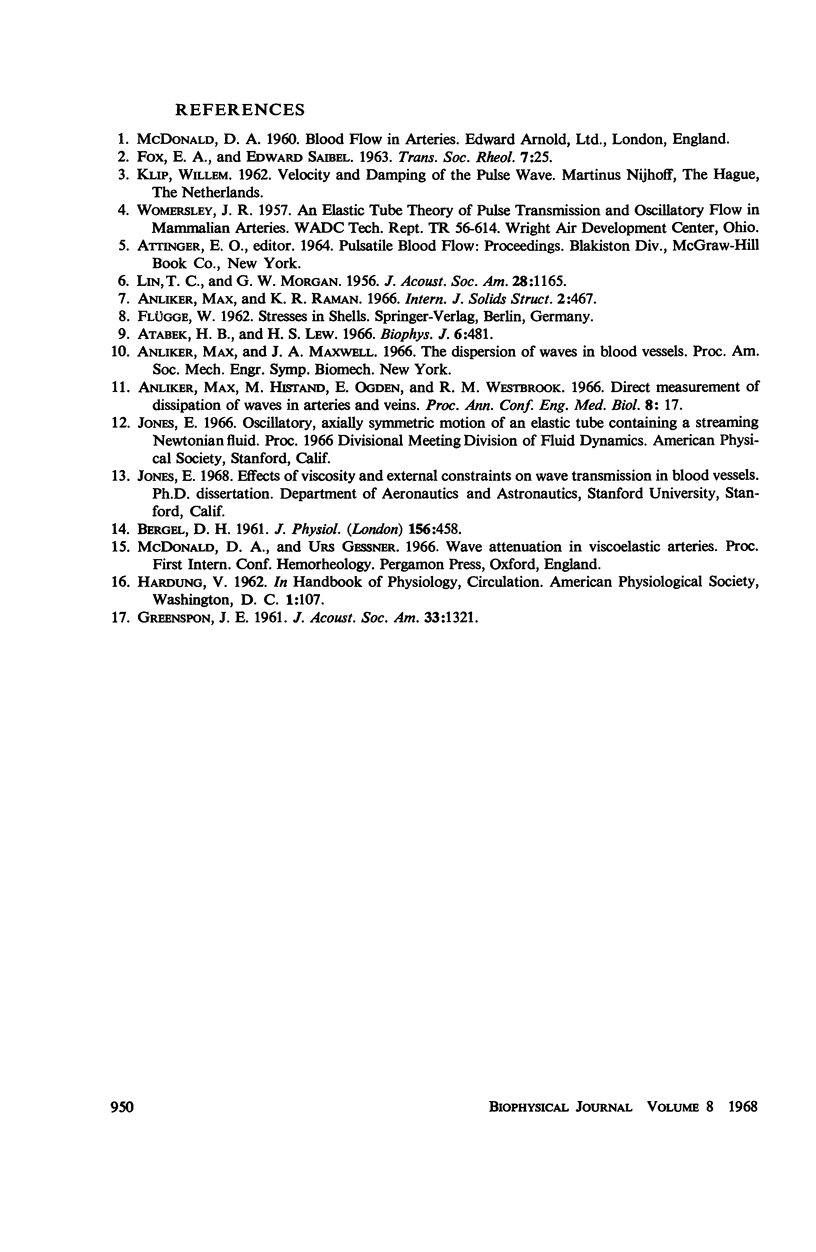
Selected References
These references are in PubMed. This may not be the complete list of references from this article.
- Atabek H. B., Lew H. S. Wave propagation through a viscous incompressible fluid contained in an initially stressed elastic tube. Biophys J. 2008 Dec 31;6(4):481–503. doi: 10.1016/S0006-3495(66)86671-7. [DOI] [PMC free article] [PubMed] [Google Scholar]
- Bergel D. H. The dynamic elastic properties of the arterial wall. J Physiol. 1961 May;156(3):458–469. doi: 10.1113/jphysiol.1961.sp006687. [DOI] [PMC free article] [PubMed] [Google Scholar]


